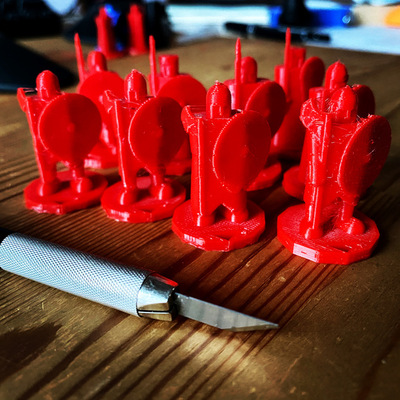
|
Olivier Sanfilippo |
| 2021-03-17 |
Olivier Sanfilippo
I did a review of L'Empire des Cerisiers and Olivier Sanfilippo. Olivier wanted to answer some of the points in it. We convened on a Q&A format and here is the result.
Olivier Sanfilippo is an author / illustrator / cartographer. He received an Ennie in 2016 for his work in Shadows of Esteren. He works or has been working with many editors, his up-to-date bibliography scrolls almost without end.
The color illustrations in this post were taken from l'Empire des Cerisiers. Please remember that this RPG was entirely made by Olivier: text, illustrations, and maps.
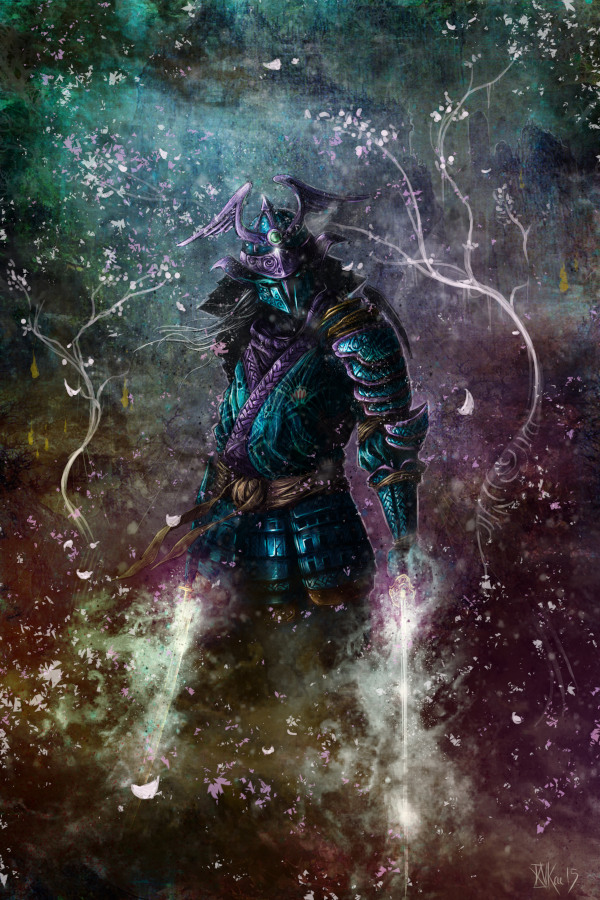
"Olivier Sanfilippo", that sounds like "Mediterranean Mediterranean", what's the story behind your name?
I am a Mediterranean, my last name is from Sicily, I am a big mix of mainly mediterranean origins. From my Father, I am from Calabria and Piedmont, and from my Mother, I am from Nice, Neaples, Switzerland, and Malta too! My family is now based in what is called here "Païs Mentounasc", the "pagus" around the city of Menton, in Southern France.
Would your name be "Sylvain Sanmarco", what would be the story?
I'd tell you that my parents met somewhere on bridge crossing a canal, under the cover of the venitian night!
Another call to your imagination, The Samurai in St-Tropez, Hasekura Tsunenaga, would he inspire you a module?
Truth be told, I have quite some notes on that traveller, I alluded to him in my doctoral thesis and I have been wanting to build on his story ever since! Maybe an opportunity for writing a module in a historical setting. He met the local nobility while in St-Tropez, I had access to the diaries of the people present, their recollections are wonderful to read. The japanese delegation was much in demand, they were a sensation.
An excellent module might be grounded in this event, two worlds meeting, two cultures meeting in a direct, yet improbable way.
What was your first TTRPG experience?
Ah, it was Dungeons and Dragons, I was 10 years and half. It was during a summer camp, one of the staff gathered a small group of kids and mastered a module for us, we were thus initiated to TTRPG. We played a few afternoons. I have fond memories from this time.
At the table, are you more often referee or player?
I am on both sides of the screen, my wife is a player and a referee as well. We take turns. Recently, our son started mastering, so everybody in the family masters in turn!
In your family, what is mostly played? TTRPG or board games?
As my previous answer might have hinted at, we all play TTRPGs, but we play traditional board games and video games as well, we are a family of gamers!
What are your 3 or 4 favourite TTRPGs?
Oh, it's so difficult to choose! My taste evolves, it depends on my mood, my wants! Were I to point to a handful of games today, right now, I would point at Les Cahiers du Vastemonde de John Grümph, Tribe 8 (its setting is a real jewel!), Dungeon and Dragons 5th edition, and Legend of the 5 Rings.
Even if I don't play L5R much these days, it has left me with wonderful memories, it allowed me to meet extraordinary people. It gave me years of passionate campaigns, it sparked my interest in japanese culture, and of course it's one of the reasons why I created my own japanese fantasy setting.
(I did a small review of John Grümph's New York Crossings)
As an illustrator, do you scribble at the table when you're a player and you're out of turn?
Always! I can't help it, if the spotlights are on another player, I do scribble, but I keep my ears on the action. On the other hand, I force myself to scribble images about the current session. It helps me staying in the universe and it brings graphical elements for the sessions.
Who are you favourite illustrators and cartographers?
There are so many of them, I will only list a very short list of them. Nicolas Fructus is an exceptional artist, illustrator, cartographer, and author. His work inspires me tremendously. His architectural representations, his cities are amazing, alive. A unique atmosphere emanates from his graphical work.
The cartographer Francesca Baerald is next, she too is an extraordinary artist. Her cartography work relies entirely on traditional painting techniques, it's charmingly unique.
I am a complete fan of the graphical work (and of course of the animation work too) of Studio Ghibli. It's a recurring inspiration in my work, on all three facets, illustration, cartography, and text.
Sergio Toppi would be next, for his black, and his ink images, and his composition work.
I'm in admiration of Yoshitaka Amano and of the studios and concept-artists who worked on the Final Fantasy license and so many other licenses. Their production is insane!
The list then goes on and on, romantic painters, woodblock print masters, or traditional japanese painters, and then the artists and creators who work with me or correspond with me. I am constantly feeding on the interaction with them.
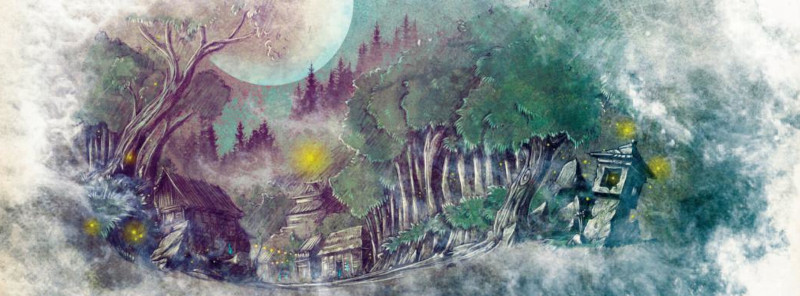
What was your first exposure to japanese soft power?
I fell into it very early, via the Wednesday afternoon japanese anime they put on french television. But that wasn't a gateway to Japan itself. Later on, as a teenager, I struggled with manga (except with what was turned into anime and landed on TV). I read several of them, but my lack of understanding of japanese culture, the codes and all, it left me in the dark, but I knew I was missing some pieces of the puzzle.
I was practicing Karate at that point, but the cultural aspect in the gym was limited. We fell back on Jean-Claude Vandamme movies and the like, they were at their apex then. Japan was not that interesting for me.
But that changed, thanks to role-playing games. I discovered and bought Legends of the Five Rings when its french translation came out. I was fascinated by the visual aspects and by the game's experience which contrasted with what I was used to in role-playing games at that point. We played it a lot. As I was starting on my History degree, I decided to take a closer look at the culture from which L5R was taking much of its inspiration. Thus via japanese history then japanese traditional culture, I discovered Japan and went deeper.
My interest in japanese folk and pop culture was resparked, history and culture had given me keys to understand the set of elements, the charm and beauty of many of the incredible works by japanese authors and artists.
I went further, my interest in Japan turned to passion, I ended up working on researching about exchanges between Europe and Asia with a focus on Japan, until the doctorate. I realized then the importance of my first exposure via the Wednesday afternoon comics. Those references now wear their full meaning, although they seemed to be irrelevant when I was a kid.
Tell us about your best Tōkyō afternoon
There were so many, the first that comes to my mind right now would be the one spent with a friend named Miyuki and her family. I was their guest for the week-end. We strolled in the Tsukiji fish market and went to eat Mr. Nishi's favourite sushi. We then roamed about Kappabashi street then Asakusa. We laughed a lot, I learned so many things with them. Miyuki is still a very close friend of our family.
Another place or moment that left a mark on you in Japan?
Really, they are too numerous. I am thinking about a good time and another comes directly overlapping it, and then another. My stroll, alone at dawn, among the torii, the trees, and their shadows around Fushimi Inari Taisha.
Ascending Fuji-san by night.
The extraordinary night I spent with locals in an izakaya in Hirado, I was the first ever foreigner to enter there. That was exceptional, the kindness, the humour, the laughs, how I was welcome by them. All the hotels in Nagasaki were full. I spent the night under a gallery in Hamamachi.
My simple walks in Kyōto, Tōkyō, and other cities. The nights in the Golden Gai with Nobu and friends. Discovering Itsukushima and climbing the Mount Misen. Meeting many many people, Nozomu, my friend from Tōkyō University. Speaking of the University, all those days spent roaming its archives and libraries, the hours spent with the Western History graduates, café terraces... And its Akamon-rāmen, so delicious! I have to stop, I could go on and on with japanese cuisine. I have to visit again as soon as possible!
To answer your question more squarely, my favourite moment in Japan starts when my plane landed in Narita and ended a few months later in the plane leaving it.
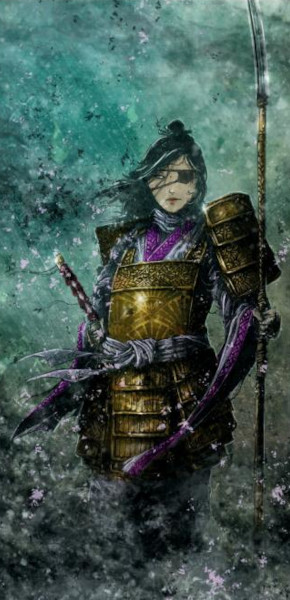
Are you currently reading a manga or are you reading something related to Japan (or to the Cherry Blossom Empire)?
I am currently reading Sekiro, but I do actually consume a lot of anime (which takes up less space).
Then, I read about history, anthropology, folklore. I have just read L'invention du Japon by Philippe Pelletier, the next one will be L'Esprit de Plaisir de Philippe Pons et Pierre-François Souyri.
I read a lot of academic articles, or articles from the cultural press. My current research work focuses on beliefs, and on indigenous people, but as soon as I find something that might interest me, I go on and I read it. Somehow, my sweep is rather large. The more I read, the more it impresses on me that I don't know much.
What was the first map you ever drew?
I was a kid and I was already drawing plans and maps. I was living in a small village named Gorbio and I was part of a band of friends. I drew the plan of our HQ, a hut in the woods and the access paths to it. Defence perimeter planification (laughs).
Later, I quickly went on to maps for our RPG sessions and then I kept on drawing for my historical research. In parallel, my first published maps were for L5R, for the Matsuri adventure compilation we presented to Way of Rokugan (the francophone official L5R association). My first professional maps have been published around 2009, they were city maps for Alkemy RPG, the publisher being Les XII Singes.
Nanda is the name of the Dragon Emperor, it could read "Southern Field". Why that name? Google results point to an empire in 400 BC India
Yes, he is the boss of the Dragon Kings and has an Indian origin indeed. Behind it a set of concepts is hiding, an agglomeration of figures and game secrets, directly inspired from Japan mythological figures and their origins (foreign origin for some of them).
In the whole L'Empire des Cerisiers_ core book there are only 8 chinese characters (3 for the "King Sushi" illustration), but the glossary lists japanese words that are clearly "on-yomi". What is the design decision behind this avoidance of chinese characters?
It's fortuitous. I did not decide that formally. Regarding the illustrations, it's because I am not a japanese speaker. I know many words, as the glossary can attest, I know the standard phrases, I can grok my way around, but I cannot read or write Japanese. Thus, I prefer not to write. I do not want any spurious calligraphy in my work!
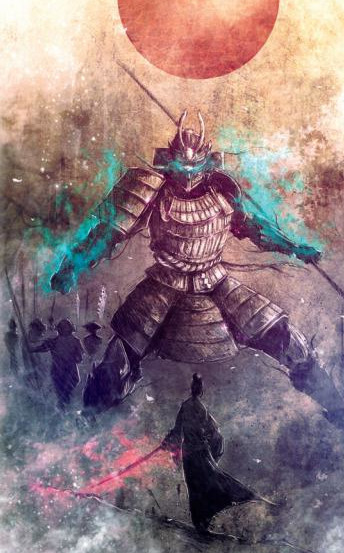
The sacred suit of armour in L'Empire des Cerisiers are a kind of cherry on the top of the cake. Are the armours of the Imperial Guard quartered in the Imperial Palace? How do they cross the surrounding lake?
Yes, that's definitely the icing on the cake! I am a mecha and exo-armour fan. Since the very beginning, since the first ideas that germinated in the setting, the sacred armours were present. Referees are free in how they use them at their table, but I couldn't go on without including them in the game!
The smallest of the armours may cross the lake by using the bridges, the heavier ones may be transported by barge. Remember, it's a fantasy setting, one can imagine many other ways to cross that lake! Most of the zuijin of the Lightning Dragons stay quartered in the palace, the protect the Emperor and his family and guard the palace perimeter. When they leave the palace it's to escort the princesses and their husbands. It's been generations since the Emperor last left his palace.
One of my own raving, an adventure centered on a sacred armour that is a warship, the Yamato, forgotten in the Kure port. One of the southern lord would want to reactivate it and use it to take control of the shipping lanes...
You can! That'd make an over the top sacred armour, but why not! Little spoiler: the supplement around yōkai will be published by the end of year and will reveal a few game secrets. Look for Kakurazeto and look at the location map carefully... There will be Takarabune stories...
Are there supplements in preparation for L'Empire des Cerisiers?
Yes! the supplements that were financed during the crowdfunding are done since 2019, but the editor's schedule, the pandemic, etc, all delayed the actual printing.
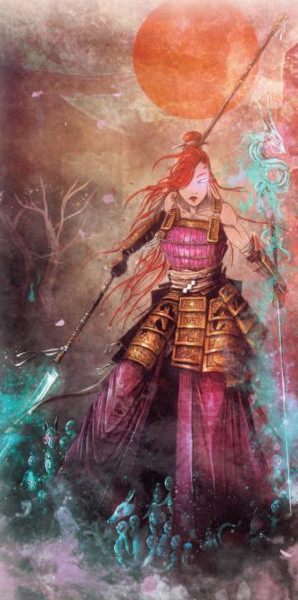
The first one is a location supplement with typical floor layouts (relais hostel, shrine, smithy, dōjō, sake brewery, ships, etc) with texts and isometric plans so that they can be put to use directly.
The scenario collection (Sakura no Densetsu) contains six adventures. The authors are Aldo Pappacoda, Philippe Auribeau, Coralie David, Jérôme Larré and myself.
Finally, there is the Yami Monogatari, a supplement about the Yomi no Kuni (land of the dead). It contains two linked adventures written by Philippe Auribeau.
Those three supplements will be released soon and will be commercialized in shops. For the last months, I have been working on what's next, three books that will be pillars to the game.
The first one, as written above, will be about yōkai, but it will not be a bestiary, it will be about secrets and factions. It lets me shed light on certain aspects of the setting and make them deeper. It will be a very copious supplement, the background part will be consequent, factions, various groups, NPCs will be presented, important pieces of the meta-game, secrets of the setting foundational history will be revealed, and more. New locations will be detailed, two cities, Yuna-jinja and Kimon-shi (on par with the Sakura-kyō presentation in the core book), and smaller locations like Inari-jinja, Kakurazeto, etc. All those locations will have maps and descriptions. Right now, I am working on the three scenarios that will be included. It should be released Q4 2021.
The second supplement will be about factions and the people of the Empire, the Sakurajin, and their society. I'll be coming back to components of this society and will write about themes and subjects that I deem important. For instance, Yukihime Princess introduced changes that allowed women access to succession and courtly offices. That clearly sets l'Empire des Cerisiers apart from historical Japan. The supplement will have sections about court nobles, warrior nobles, groups and religious factions, traders, etc. It will also provide content about farmers, eta, wakō (pirates), criminals, etc. As you might have guessed, new locations will be described, Chikageshima (capital of the Taito domain), Hime-jinja (the shrine dedicated to the legendary Himiko Princess), the Island of the Forgotten Ones (where the imperial power despatches its opponents for execution), the islands in the great south with the southernmost port of Kibashijima and the Byakko-jinja. It should be out for the beginning of 2022.
The indigenous people of the archipelago will be the subject of the third supplement. The Utari are ancient people from before the Empire and still living in the archipelago, but they are not the only ones. Some key points in the history will be explored, around ancient people and tribes and the margins of the Empire: Kuma no Ōkoku, the southern islands, and margins in the heart of the Empire: remote valleys, and deep sacred forests. This supplement is currently in the "gathering notes" stage, it is scheduled for publication in 2022.
Of course, those three supplements will complement each other, they will be linked and will be the heart of the setting. In parallel, I have many ideas and wishes, and we convened with the editor on a digital collection of content that'll support and enrich the game and the setting. Those supplements will be shorter and more focused, on subjects that would not the fit well in one of the three big supplements. The first of those digital items will be about Sacred Armours and animated Haniwa. It is already being redacted and quite advanced in its schedule. It will be an opportunity to publish special scenarios. The first of those digital adventures will be written by Julien Moreau, the author of the Meute RPG. We are working on illustrations and will start the layout work soon.
Is there an english version of L'Empire des Cerisiers on the horizon?
There are people interested in it but that's all I know. My editor takes care of that. I am open to any proposal, should someone contact me, I'll consider the option with Matthieu, Arkhana Asylum Publishing's boss.
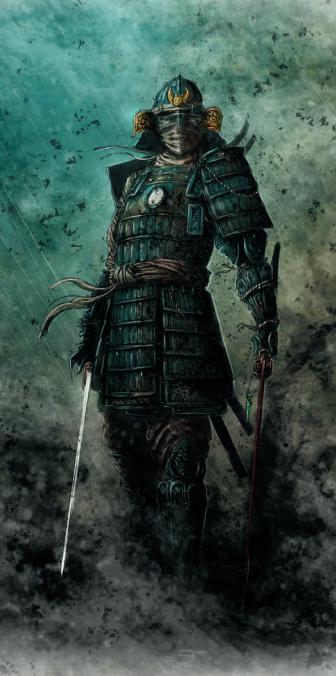
Your game has a nice community on Facebook and you are quite active there. Is it a source of inspiration and/or energy for you?
That's incredible and wonderful! It clearly is a source of personal motivation and energy. Regarding inspiration, it's a bit particular, it's not the adventure ideas that inspire me, as I am already working on many themes and subjects and my wheel is already rolling freely.
The frequency with which some themes come back tells me what themes are in demand and I dig in that direction. I could also simply see a theme and tell to myself "yes, I absolutely need to write about that". For instance, the Yōkai supplement was scheduled for later, but since Yōkai may be used as PCs or NPCs, questions were numerous and the demand for setting secrets behind Yōkai made me reschedule and give priority to this supplement. I wanted to give the necessary keys to the referees as soon as possible. It's an answer to the demands and to the activity of the community. This group of people sharing an interest in l'Empire des Cerisiers is a motivation base very important to me.
Beyond inspiration, it's powering my production. Should there be fewer people and less goodwill, I would certainly have been less prolific. There is a certain level of pressure, I really want to please them, they deserve it! People in the community are very friendly, there is a sound emulation among them, and it gives rise to wonderful initiatives. It's dizzying, the welcome the game is seeing makes me happy. A huge thanks to you all, I am very lucky!
Would you like to answer to some of points I made in my review of l'Empire des Cerisiers? Or answer questions that I didn't ask? Is there something I misunderstood?
Your review was nice, I do indeed have answers to the points you raised, not because they were invalid, but because they keyed on interesting things and those things deserve an explanation. It will help everybody better understand my way of working.
Here they are:
Sakura-kyō (when putting two chinese character together, the on-yomi are used, rare are the kun-yomi on-yomi portmanteau)
Sakura-kyō was a working title for the capital city of the empire. As I answered above, I am not a japanese speaker. When japanese-speakers and japanese people participated to the reading of the manuscript, Sakura-kyō came up. But I so like the way it sounds... I have to admit, I played the Franpanese card, and pushed for it.

The way the mountains are drawn (looking more chinese than japanese)
Once again, let me plead guilty, and let me invoke my artistic license on illustrations as well. I have an immense love for the traditional japanese pictorial art, especially the sumi-e schools. I know, it is imported and/or inspired by China. Even if such mountains may be found in japanese art, it's not realistic. But that is not the only reason. I tend to represent mountains in this way also in my work on western settings. It gives a verticality and underlines the impression of gigantism. I did not think that such a graphical choice would impact the perception of japanese readers. I track such feedback carefully. It's only a graphical choice, but I think I'll have to vary representations for the upcoming books.
Many thanks to your friends and to the sister-in-law of another reviewer for this precious feedback.
No Fujiwara? No Taira? No Genji? I do insist, L'Empire des Cerisiers is not historical Japan. I do not mean that there is nothing japanese in it. I want to make japanese fantasy. I think it is the same approach as that of Noriko Ogiwara in Tales of the Magatama. I start with the japanese matter to build an imaginary universe. It could be a parallel universe where a set of inspiration gathered, talked, hailed each other, giving birth to a game setting where everyone may bring and discard whatever pleases them. Nothing prevents one from integrating clans and family from historical Japan. I myself take inspiration from some of those. Some family names are found in history but it doesn't mean the whole clan is copied from the historical one, it's more of a wink.
The same thing happens with works of western fantasy. I leverage historical, archeological and cultural works to build a work of fiction, a game setting. The inspirations are also not limited to historical Japan, they also encompass japanse pop-culture. I wanted to avoid a western-based vision on it though. I know it's easier said than done. It is evident that my personal biases, acknowledged or not, are part of L'Empire des Cerisiers, it is a personal work and I am not japanese. I cannot transcribe what and how a japanese person would. I have a deep respect for the Japan and its inhabitants, their cultures and societies. I dare to hope that, with L'Empire des Cerisiers, I am proposing an interesting game setting for TTRP gamers. At least I will have shown my love and my passion for the country, the people, and their cultures.
China? Korea? Spoiler alert. There were migration waves reaching the archipelago, but the main influence was felt when the Dragon Emperor, his Queen and King Dragon siblings, and their entourage arrived. It is linked to the secrets behind the game. Tiny spoiler: some pirates tell about desolate lands beyond the portal cities that may be found when one sails away from the archipelago. There might be a campaign focused on that. But again, one has to understand that it is a fantasy world. Also, one of the design goals is to let referees decide on what is the outside of l'Empire des Cerisiers. The supplements won't delve much beyond some entry points to what is outside.
I wish you all a lot of fun around the table!
(For those of you who understand French, there is an excellent audio interview of Olivier Sanfilippo on radio-roliste.net)
